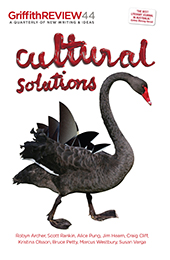AT THE OUTBREAK of World War II the Nordic economies of Finland, Sweden and Denmark were amongst Europe’s most backward. Neither cars nor furnishings were manufactured for export in great numbers. There was no world-leading cinema, technology, architecture or fashion. And as for cuisine, it barely existed beyond the confine of cold cuts, bread and potatoes. Today, almost seventy years after war’s end, those same countries are at the forefront of European innovation and design. Scandi cool might be the minimalist aesthetic badging the world’s most creative economic cluster, but it is smarts that drives Sweden, Finland and Denmark.
Anyone curious about the engines of contemporary creativity should ideally undertake a pilgrimage to all three, but as each is anchored to a high-taxing welfare state strong on income redistribution and liberal values, the student of the creative economy can go a long way with generalisations from one Nordic case study. It was a sentimental attachment to that pile of artfully arranged limpets adorning Bennelong Point that drew me in 2009 to the Danish capital of Copenhagen in an effort to find the keys to Nordic creativity. And then last year, in the months before the fortieth anniversary of Jørn Utzon’s Sydney Opera House, I was lured back again to visit Denmark’s – and perhaps the world’s – coolest architecture firm. It goes by the name of Bjarke Ingels Group, or BIG. Also on my list was the country’s young fashion scene, the designer eyewear firm Lindberg, the maker of the distinctive Faroese knitwear worn by actress Sofie Gråbøl in The Killing, and the contemporary art museum ARoS. Perhaps the most memorable visit of a crowded itinerary was to the Utzon family home at Holbæak in the woods outside Copenhagen, where I spoke to Jan, Jørn’s son and himself an architect, about the genesis of the opera house. ‘The first designs took shape in the garage,’ Jan confessed as he sat in the study holding an early wooden model – little more than a cluster of raised spherical segments – used by his father to explain his out-of-the-box design concept to a skeptical Sydney in the early ’60s.

Already a subscriber? Sign in here
If you are an educator or student wishing to access content for study purposes please contact us at griffithreview@griffith.edu.au





